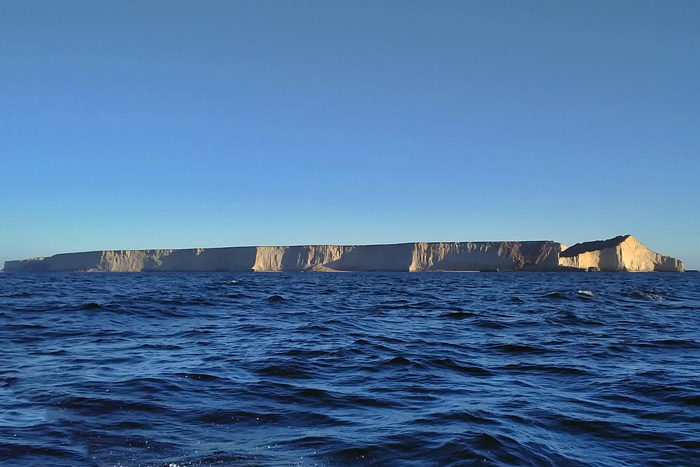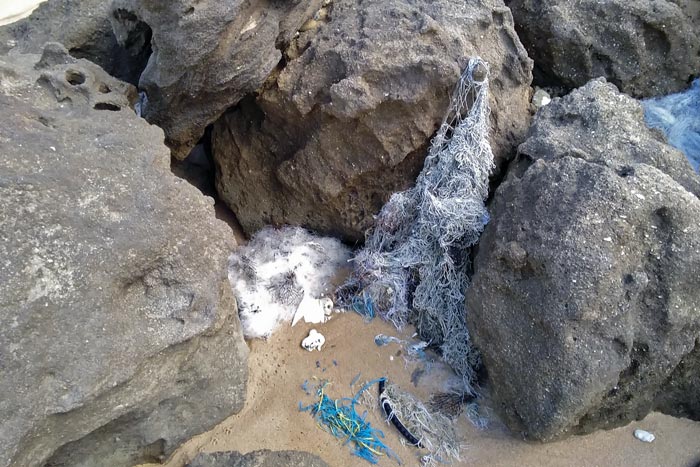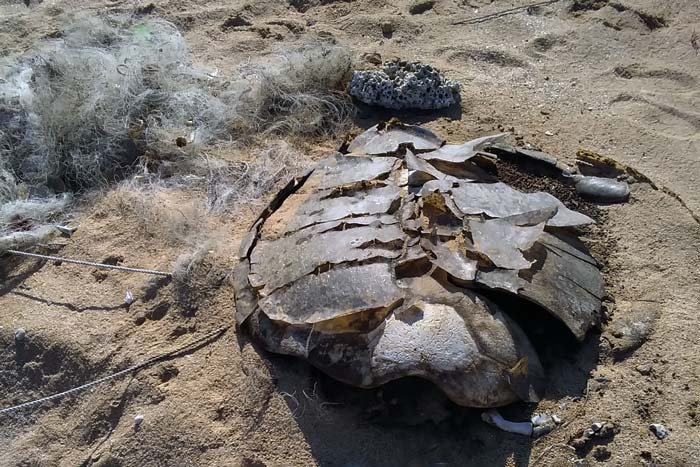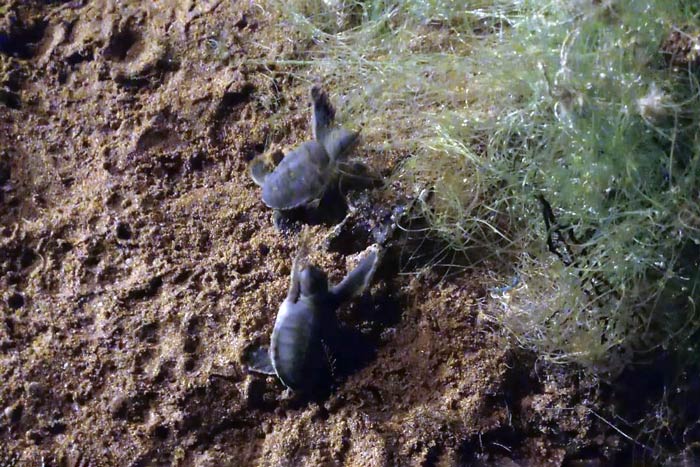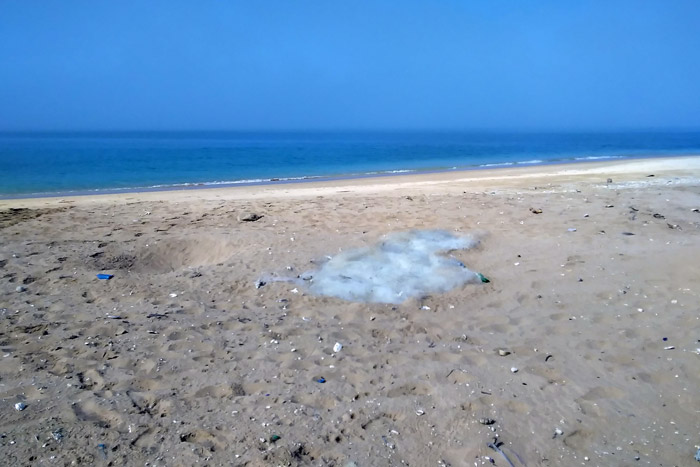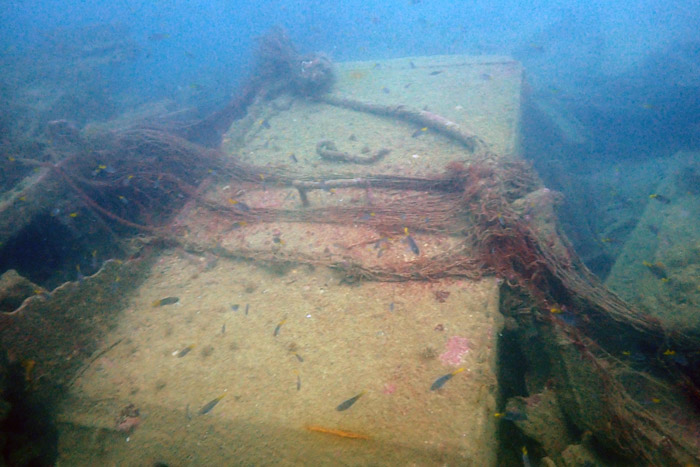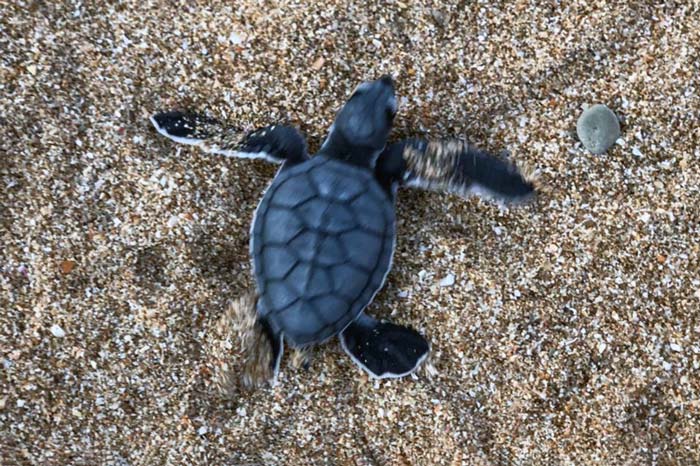Astola Island, located in Arabian sea, east of Pasni district of Balochistan, Pakistan, is famous for its rich marine biodiversity. The island, including its buffer zone of 401.47 km2, was declared Pakistan’s first Marine Protected Area on 15 June 2017. Also known as Jezira Haft Talar Satadip, or ‘Island of the Seven Hills’, Astola island is the largest uninhabited island in Pakistan. It has sandy beaches, crystal clear waters and small rocky mountains that stretch across the 6.7 sq km island. Its beaches provide nesting ground for both birds and green sea turtles (Chelonia Mydas).
Moreover, Astola Island’s waters are home to around 22 species of corals, as well as dolphin, whale and several species of fish. Even the endangered Arabian Sea humpback whale – a rare marine mammal only found in Arabian Sea – has been spotted infrequently in the area around the island. (MFF Pakistan (2018). Astola Island – First Marine Protected Area in Pakistan. MFF Pakistan, Pakistan.)
Green turtle nesting grounds under threat
On a recent expedition to Astola Island by our team, we recorded over 800 green turtle nests on the beach. We also witnessed numerous nesting events, as well as two hatching events. However, nesting green turtles and their hatchlings face multiple threats on the island. Sadly, Astola Island and its surrounding waters are littered with ghost nets. The nets are either discarded or lost at sea and wash ashore with the high tide. When the tide ebbs, the nets get stuck in the sand and on rocks on the island, and on the coral reefs. Some nets are likely discarded at the beach itself.
The ghost nets on the beach pose a major entanglement risk to the nesting green turtles and to the hatchlings as they scramble to the sea. We saw proof of this as we discovered the remains of two dead green turtles still entangled in ghost gear. We also rescued several hatchlings from entanglement during their scramble to the sea.
The hatchlings also face multiple threats from other predators present. The saw-scaled viper (Echis carinatus astolae), which is endemic to Astola Island, lurks near the nests to ensnare hatchlings as they emerge. In addition, many migratory birds come to the island to rest. Hatchlings provide a nutritious meal before they continue their journey.
Fishers’ temporary base
Human activity is limited in the area and not many people set foot on the island regularly. However, fishers from Sindh and Balochistan use the island as a temporary base when they anchor their boats during the fishing season from August to May. Usually, they stay for a week to ten days on their boats. Some come to Astola for up to a month. They live on the coast of the island where they have constructed a few wooden huts. The fishers use mostly fishing rods, ring nets, ordinary nets and spear guns to fish, and they mainly catch fish, crabs and lobsters.
Exploring Astola Island
The Olive Ridley Project team spent three nights on Astola. The first day we mostly scuba dived around the island. A shipwreck 3 km south of the island revealed a beautiful diving spot. Unfortunately, ghost nets cover the shipwreck, causing a danger to marine life and divers alike. Wave energies tear the nets apart, creating fragments of a bigger net which creates more hazardous ghost gear bodies. On the second day we inspected the nesting grounds and recorded potential hazards for nesting females and hatchlings.
The team also snorkeled around the island and looked at the foraging grounds, which would attract turtles to this area. The marine diversity around the island makes Astola a great spot for green turtles to nest and for their hatchlings to find nourishment as soon as they hit the sea. However, the presence of ghost nets is a big concern.
Future plans for Astola Island
The ORP team hopes to conduct a cleanup of the ghost nets on Astola Island in the near future. The goal is to provide a safer nesting and hatching environment for sea turtles and other animals. We also plan to work with the Pasni community to replicate the circular economy project we developed in Abdul Rehman Goth. This project uses recovered nets to make ghost net bracelets and dog leashes – producing value out of waste. The involvement of the local fishing community is key to making the project a success and ensuring both the local economy and the environment benefits.
We are also pleased to announce a new partnership between ORP and the Maritime Archeology and Heritage Institute (MAHI). Together we aim to remove ghost nets from shipwrecks in Pakistan’s waters. MAHI is a non-profit, autonomous research organization dedicated to the investigation and preservation of maritime heritage in the Western Indian Ocean. Based in Pakistan, the organization works to investigate, identify, document, interpret, and preserve the maritime cultural heritage of the region.
The MAHI team are experts in working on shipwrecks but ghost nets often hinder their work. By working together, MAHI will support ORP in clearing shipwrecks of ghost nets, and ORP will help MAHI create a safer working environment. And once we have removed the ghost nets, marine life can thrive and scuba divers can enjoy these sites without any hindrances.

